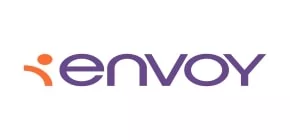- within Immigration topic(s)
- in United States
- with readers working within the Media & Information industries
New technologies can help alleviate some of the challenges of the H-1B visa application process
Any human resources professional tasked with immigration understands how important—but also complex—H-1B cap season can be. A popular work authorization option utilized by employers looking for high-skilled foreign talent, the process of securing an H-1B visa requires coordination and planning between all key stakeholders. However, modern technologies have helped to reduce or eliminate many of the traditional obstacles faced by HR teams and employees.
Four ways technology can create a better H-1B cap season experience for HR teams and sponsored talent
Speed up paperwork
HR teams handling immigration traditionally have to complete visa petitions and other paperwork manually, a process that can be tedious and prone to error. However, technology can automate the process through smart questionnaires that retrieve information automatically from previous cases, user and company profiles and job description libraries to minimize the risk of errors that could delay submission. With help from an organization's immigration legal team, HR professionals or employees can complete H-1B petitions that would have taken hours to fill out manually in a fraction of the time.
Keep track of deadlines and action items
The H-1B application process requires a number of different forms to be filed at different times over the course of several months, including the labor condition application (LCA), electronic registration and the H-1B petition itself. For organizations that sponsor a large number of foreign nationals, these deadlines and outstanding tasks can easily pile up. Technology can help HR professionals automatically prioritize H-1B cases and renewals based on expiration dates, start dates or deadlines without having to manage these dates themselves. Teams can then quickly identify next steps for each case.
Download our latest e-book, The ROI of Immigration Technology, today!
Enhance Communication
In the current regulatory environment, it's understandable that foreign nationals may feel anxious throughout the H-1B petition process. Technology that enables a centralized communication center can improve the employee experience by giving them the ability to interact directly and securely with their immigration counsel. This type of real-time communication can provide peace of mind as well as much-desired transparency into the H-1B process. This type of feature also keeps HR from having to play the middleman between the attorneys and employees.
In addition, putting together an airtight H-1B petition requires a great deal of information and documentation from foreign national employees, and any missing paperwork can trigger a Request for Evidence (RFE). In this event, a direct line of communication with employees can help attorneys respond to RFEs efficiently.
Store documents securely
Hiring foreign talent involves many important documents that contain sensitive information. Although USCIS requires that employers maintain certain records for sponsored employees, including Public Access Files, storing documents in a non-secure environment may run the risk of being non-compliant, particularly if the government conducts a site audit.
Technology eliminates the need for physical file storage by allowing HR teams centrally manage all required documentation such as PAFs on secure cloud-based servers so users can pull information whenever and wherever with assurance that sensitive information is protected. In today's work environment, having remote access to important documents is also critical for HR teams.
Originally Published by Envoy, December 2020
The content of this article is intended to provide a general guide to the subject matter. Specialist advice should be sought about your specific circumstances.


